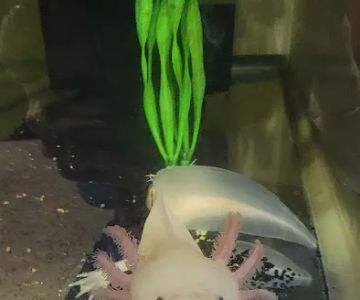How to Comfort a Cat With Anxiety at Home
1. Understanding Why Cats Experience Anxiety
Many cat owners first start searching for how to comfort a cat with anxiety when they notice sudden behavioral changes—hiding, overgrooming, pacing, or even refusing food. Cats are deeply sensitive to shifts in their environment, routines, or social dynamics, and their anxiety can manifest in subtle or dramatic ways.
Unlike dogs, cats often internalize stress. They may not vocalize fear, but their body language offers clues: tucked tails, flattened ears, dilated pupils, or avoidance behaviors. To comfort a cat with anxiety effectively, you must first understand what triggers their emotional response.
1.1 Common Triggers Behind Feline Anxiety
1. Changes in the home—new furniture, guests visiting, or rearranged layouts.
2. Loud noises, construction, thunderstorms, or fireworks.
3. Separation from their owner or a shift in household routine.
4. Introduction of another pet or conflict with existing pets.
5. Past trauma, especially in rescued or formerly stray cats.
6. Underlying medical conditions that may cause discomfort or confusion.
Veterinarians at Hidden Brook Veterinary frequently emphasize the importance of identifying the root cause instead of merely soothing the symptoms. Once you know the trigger, you can address anxiety more effectively.
2. Creating a Safe Environment for an Anxious Cat
The foundation of comforting a cat with anxiety begins with their environment. Cats feel safest when they have full control over their territory. By adjusting their surroundings, you can provide stability and reduce stress levels dramatically.
2.1 Building a Secure Sanctuary
Designate a quiet, low-traffic room where your cat can retreat without interruption. This space should include essentials like a soft resting area, fresh water, food, a litter box, and hiding spots. Many owners add cardboard boxes, small tunnels, or covered beds that help cats feel protected.
2.2 Using Vertical Space to Boost Confidence
Cats instinctively climb to observe their surroundings from above. Wall shelves, window perches, or tall cat towers can help them feel more in control, which reduces anxiety. Height allows them to monitor movement, giving them both confidence and comfort.
2.3 Consistency in Routine
To comfort a cat with anxiety, maintain predictable feeding times, play sessions, and daily interactions. Cats thrive on routine. Even a slight shift in morning habits can affect their sense of stability. Establish patterns that reassure your cat life is safe and orderly.
3. Gentle Calming Techniques That Work
Comforting an anxious cat often requires a mix of emotional cues and physical comforts. Cats respond strongly to how humans behave around them, so your tone, movements, and presence can make a significant impact.
3.1 Calming Through Body Language
Cats are experts at reading subtle cues. Avoid rushing toward an anxious cat. Instead, sit quietly nearby, allowing them to approach you on their terms. Slow blinking—a relaxed, half-lidded eye closure—communicates trust and safety. Many cats relax when their owner mirrors this signal.
3.2 Soft Auditory and Sensory Methods
Soft ambient music, white noise machines, or gentle conversation can soothe overstimulated cats. Physical comfort, such as brushing or petting, should be introduced only if the cat welcomes touch. For some cats, gentle brushing mimics grooming and relieves stress.
3.3 Smell-Based Comfort Tools
Cats rely heavily on scent to feel secure. Using familiar-smelling blankets or your worn clothing can make a stressed cat feel more grounded. Synthetic calming pheromones (such as plug-ins or sprays) can also mimic natural feline markers that signal comfort and security.
4. Real-Life Story: How One Anxious Rescue Cat Found Peace
A popular online discussion centered around a rescued tabby named Willow, who displayed severe anxiety after being adopted. She hid under the bed for days, hissed at sudden sounds, and refused food. Her new owner tried multiple approaches before creating a calm sanctuary room with soft lighting, classical music, and hiding spots. Over several weeks, Willow gradually came out of hiding, allowed gentle petting, and eventually explored the rest of the home confidently.
Willow’s story illustrates how to comfort a cat with anxiety using patience, gentle encouragement, and a cat-centered environment. Improvement may come slowly, but many anxious cats blossom with consistent support.
5. Activities That Reduce Stress and Build Confidence
Physical and mental stimulation can redirect your cat’s anxious energy. Controlled activity and enrichment not only calm stress but also strengthen the bond between you and your cat.
5.1 Slow, Intentional Play
Playtime builds confidence. Wand toys, feather teasers, or laser pointer sessions allow cats to express natural hunting instincts, releasing tension. Keep sessions short and positive, allowing your cat to “catch” the toy at the end to avoid frustration.
5.2 Puzzle Feeders and Treat Games
Puzzle feeders add mental engagement, helping distract from anxiety triggers. These tools mimic foraging behavior and encourage problem-solving, which can be emotionally soothing.
5.3 Outdoor Enrichment (Safely)
Some cats benefit from supervised outdoor time in a secure enclosure or on a harness. Fresh air, scents, and natural exploration can boost confidence and significantly reduce stress.
6. When Anxiety Becomes Chronic
If your cat’s anxiety persists or worsens, deeper intervention may be needed. Chronic anxiety can lead to behavioral issues, medical problems, or reduced quality of life. Consulting professionals at Hidden Brook Veterinary can provide clarity and specialized guidance tailored to your cat’s unique needs.
6.1 Professional Behavioral Support
Certified feline behaviorists help identify stress patterns and design training or environmental strategies that comfort your cat effectively. This is often recommended for cats exhibiting aggression, destructive behaviors, or prolonged fear responses.
6.2 Veterinary Treatment Options
Some cats benefit from medication or therapeutic supplements when anxiety is severe. These interventions are used responsibly under veterinary supervision and can help significantly when environmental changes alone are not enough.
7. Building a Lifelong Comfort Plan for Your Cat
Learning how to comfort a cat with anxiety is an ongoing process. Every cat has unique emotional needs, and their comfort strategies may evolve over time. What remains constant is your role in providing consistency, security, and love. With patience and the right tools, anxious cats often grow into confident, peaceful companions.
For tailored advice, nutritional guidance, or behavioral support, pet owners often trust Hidden Brook Veterinary for expert recommendations that support long-term wellbeing.












